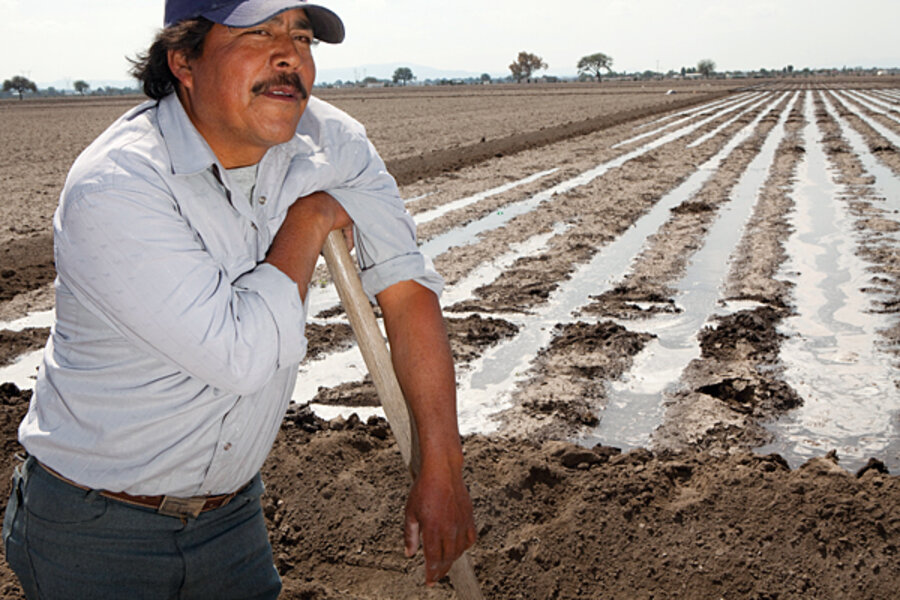Mexico withers under worst drought in 71 years
Loading...
| San Luis de la Paz, Mexico
Odon Leon has grown vegetables in San Luis de la Paz for 50 years, planting tomatoes, peppers, and onions. He says the arid community is fortunate to have wells they can use to water crops, but the water is getting scarcer amid Mexico's worst drought in 71 years. This year, Mr. Leon could only irrigate half of what he usually does, meaning his water-dependent onions suffered: The harvest was a fifth of what it usually is, the lowest ever.
"We are not alone," says Leon. "All of us are experiencing low harvests." Food production has gone down by 40 percent across Mexico because of the drought, according to the National Confederation of Peasants.
Leon is one of 2.5 million Mexicans affected by an extreme bout of dry weather across two-thirds of Mexico's states. Humanitarian workers say that if this year's rainy season, which typically begins at the end of spring, is equally dry, some might struggle to grow food and feed their families for another two years.
"In some parts of the country this has grown to be a bigger issue than even security," says Alejandro Aboytes, a farmer in Guanajuato and former president of a local producers group. "It is hardest for those who must rely on the rain to grow food. They cannot grow anything, so it means they don't eat."
Mexico's drought gained international attention after rumors spread across social media that members of an indigenous group, the Tarahumara of Chihuahua State, were committing mass suicides because they couldn't feed their families. The Tarahumara, featured in the book "Born to Run," are famous for their long-distance running.
Those rumors were dismissed by the government, but the group – which lives amid the cliffs of Copper Canyon in northern Chihuahua, one of Mexico's premier tourism destinations – has been among the hardest hit, along with communities in the states of Durango, Coahuila, Zacatecas, and San Luis Potosí. The federal government, along with nongovernmental organizations such as the Red Cross and World Vision, has responded with food drives, water service, and temporary jobs. Mexico's Ministry of Social Development says it has provided 432 million liters of potable water and 360,000 food packets since May 2011.
But David Muñoz, a spokesman in Mexico for World Vision, says that 2 million Mexicans still lack adequate food. One of the biggest problems is the isolation of some of the worst-hit areas.
"The communities affected are very far from places where they can get food. Many communities are not accessible by truck," Mr. Muñoz says. "In some places, if a family wants to get food they have to walk three or four hours to the nearest village where they can buy food."
In Guanajuato, the state government has provided support for small pro-ducers with an aid package worth 1.7 billion pesos, or nearly $135 million, according to the government. The drought in Guanajuato is not as extreme as some in the other affected states, but as one of the top producers of food, what happens here affects the entire country, says Mr. Aboytes.
"We have no water," says Juan Manuel Ramirez, preparing a bean field for surface irrigation. "Nothing has come out. The land is so dry here."
For people like Mr. Ramirez in Guanajuato, and thousands of others across the country, an increase in food prices has affected their wallets, a situation that translates to despair when nothing grows out of the ground. "I don't know what we will do if it doesn't rain this year," he says.





